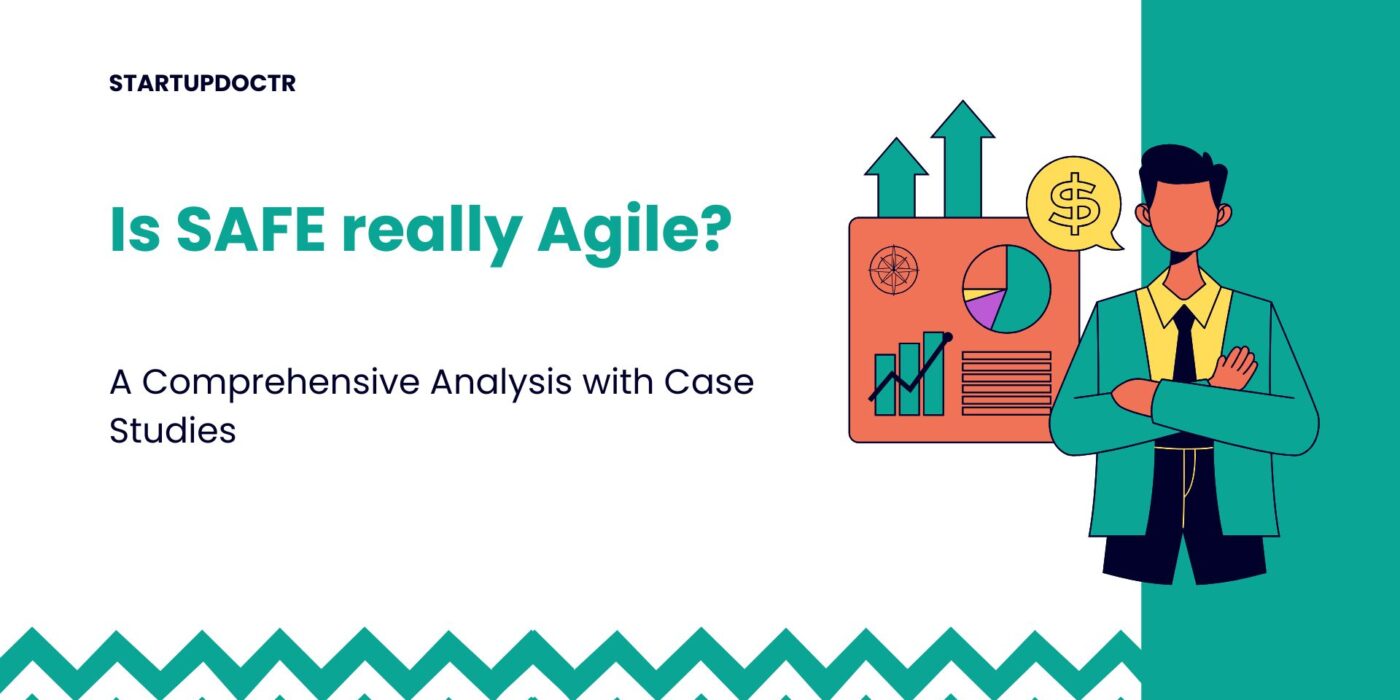In the dynamic world of software development and project management, agility is a cornerstone of success. However, when scaling agile practices across large organisations, a key question emerges: Is SAFe truly agile? This article explores the Scaled Agile Framework (SAFe), its alignment with agile principles, and whether it embodies the agile ethos. Additionally, we provide real-world examples and case studies of SAFe successes and failures to offer practical insights.
What is Agile?
Agile is a project management methodology focused on flexibility, collaboration, and delivering customer value. It is grounded in the Agile Manifesto, which outlines four core values:
Individuals and interactions over processes and tools
Working software over comprehensive documentation
Customer collaboration over contract negotiation
Responding to change over following a plan
These values are reinforced by twelve principles, such as delivering working software frequently, welcoming changing requirements, and empowering self-organising teams. Agile is fundamentally about adaptability, teamwork, and continuous improvement.
What is SAFe?
The Scaled Agile Framework (SAFe) is a system designed to extend agile practices to enterprise-level organisations. It supports large teams in coordinating and delivering complex projects efficiently. SAFe integrates agile, lean, and other methodologies, defining roles (e.g., Product Owner, Release Train Engineer), events (e.g., PI Planning), and processes to align multiple teams.
Does SAFe Align with Agile Principles?
To evaluate does SAFe adhere to the agile manifesto, let’s examine its alignment with the four agile values:
Individuals and interactions over processes and tools: SAFe introduces structured processes to manage scale, which may add complexity. However, it aims to foster interactions across teams, essential in large organisations.
Working software over comprehensive documentation: SAFe emphasises iterative cycles to deliver working software, closely aligning with this principle.
Customer collaboration over contract negotiation: Roles like the Product Owner represent customer needs, though scale can sometimes dilute direct customer engagement.
Responding to change over following a plan: SAFe includes feedback loops, like Inspect and Adapt workshops, supporting adaptability and improvement.
Criticisms of SAFe
SAFe has faced scrutiny regarding its agility:
Bureaucracy: Critics argue that its layers of roles and processes introduce bureaucracy, potentially slowing progress and clashing with agile’s simplicity.
Top-Down Control: Some view SAFe’s structure as hierarchical, which may limit team autonomy, a core agile tenet.
Complexity: For smaller projects, SAFe can feel overly complex, diverging from agile’s lightweight approach.
The Case for SAFe as Agile
Supporters contend that SAFe adapts agile principles for enterprise needs:
Alignment: SAFe ensures multiple teams pursue a unified goal, critical for large projects.
Balanced Planning and Flexibility: It offers structured planning while allowing adaptability through iterative cycles.
Value Delivery: SAFe upholds agile’s focus on frequent software delivery and customer value.
Examples and Case Studies of SAFe Successes and Failures
To provide a balanced perspective, here are real-world examples of SAFe implementation from the public domain, highlighting both successes and challenges.
Success Stories
Porsche: Digital Transformation through SAFe
Porsche adopted SAFe to integrate software and hardware capabilities, transitioning from a traditional manufacturing mindset to a digital-first approach. By implementing SAFe, Porsche aligned teams to deliver innovative digital solutions, reducing time-to-market and enhancing customer experiences. The transformation enabled Porsche to compete in the digital era, proving SAFe’s ability to scale agility in complex industries.
Key Outcome: Faster delivery of software-driven features, reinforcing SAFe’s alignment with agile’s focus on value delivery.
Southwest Airlines: Accelerated Releases
Southwest Airlines implemented SAFe to move away from a waterfall model. In 2018, they managed 28 releases with a 45% deployment success rate. By 2020, post-SAFe adoption, they achieved 349 releases with a 93% success rate, demonstrating a fivefold increase in delivery speed and improved reliability.
Key Outcome: Significant reduction in time-to-market, showcasing SAFe’s ability to synchronise teams for frequent delivery.
Cisco: Subscription Billing Platform
Cisco transitioned its Subscription Billing Platform from waterfall to SAFe in 2015. By forming three Agile Release Trains (ARTs), Cisco improved transparency and accountability. The result was a 40% decrease in critical defects, a 16% reduction in defect rejection ratio, and no overtime, with on-time product increments.
Key Outcome: Enhanced quality and efficiency, aligning with agile’s emphasis on working software.
Failure Cases and Challenges
Financial Institution: Over-Prescriptive Implementation
A financial institution mandated SAFe across its operations without piloting it first. The rigid adoption led to resistance, as teams found the framework overly complex for their context. The release train model was deemed excessive, resulting in delays and frustration rather than agility.
Key Lesson: SAFe requires tailoring to the organisation’s needs; blanket adoption can undermine agile principles.
Volvo Cars: Misaligned Roles
Volvo Cars implemented SAFe but faced challenges with role definitions. A study from Chalmers University noted that the Product Owner was not fully integrated into teams, and the Scrum Master role diminished in authority. This hierarchical structure clashed with agile’s emphasis on team autonomy, limiting the transformation’s effectiveness.
Key Lesson: SAFe’s success depends on aligning roles with agile values, avoiding traditional management hierarchies.
General Critique: Bureaucracy Over Agility
Some organisations report that SAFe’s long-term planning (e.g., 8-12 week Program Increments) feels closer to waterfall than agile, introducing bureaucracy that stifles flexibility. This perception has led to partial adoption or abandonment in cases where teams prioritise agility over structure.
Key Lesson: SAFe must be implemented with an agile mindset to avoid becoming a rigid process.
Conclusion
So, is SAFe genuinely agile in large organisations? The answer varies by perspective and execution. SAFe introduces structure that some argue conflicts with the Agile Manifesto’s focus on individuals over processes. Yet, when applied with an agile mindset, SAFe enables agility at scale, as seen in successes like Porsche and Southwest Airlines. However, failures, such as the financial institution’s rigid adoption, highlight the importance of flexibility.
Organisations must prioritise the agile ethos, ensuring SAFe empowers teams and customers rather than enforcing rules. By exploring SAFe versus agile principles and learning from case studies of SAFe implementation, we see its potential and pitfalls in delivering enterprise agile solutions. For further insights, refer to sources like Scaled Agile’s customer stories or academic reviews on SAFe adoption.







